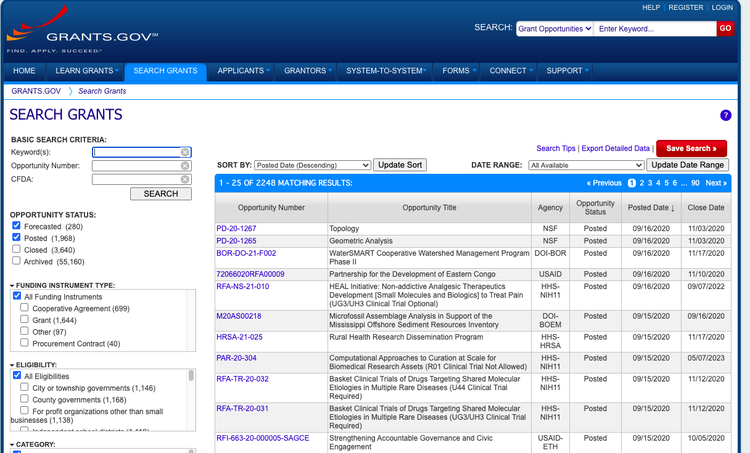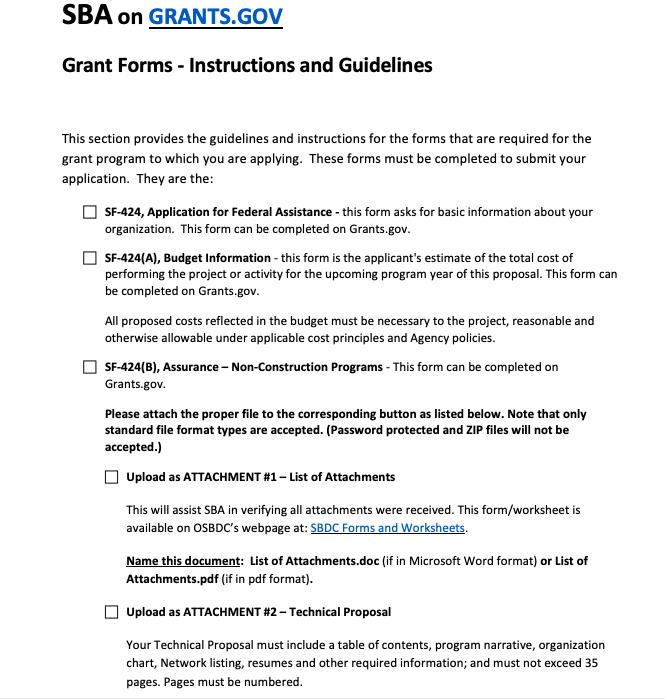How to Write an Effective Grant Proposal
As a small business owner, you probably know what it's like to need financing. Cash flow can fluctuate, and unexpected expenses can put a real squeeze on a budget that's already tight.
One avenue to explore for funding is securing a grant. A grant is essentially free money which you don't have to pay back. Funding can come from various places, including your local and state governments, the federal government, public and private organizations, and even individuals. All kinds of business owners, from solopreneurs to corporations, can apply for grants.
However, to win a grant, you need to do your research and have a strategy. With stiff competition, you want to do everything you can to stand out. To do that, you need to learn how to write a grant application that gets results.
What to consider before writing your grant proposal
Before jumping into how to write a grant letter, you need to consider some key factors. Addressing these ahead of time, even before you begin your search, will help make the grant writing process much more effective.

Grants.gov lists thousands of grants available to business owners. Image source: Author
1. Time frame
Unlike some other funding sources, such as small business loans, understand that the grant application process can take a while.
Many grants are publicly open for a set period, which can be many months. Even then, if your proposal is selected, you might not see the funds right away. Writing a grant proposal can be a time-consuming process, so factor that in from the start.
2. Spending requirements
Many grants, especially those offered by the government, have strict rules on how you can spend the award. You won't just get a check you can spend on anything; you must meet the grant's requirements.
Before you apply, go through the requirements. Understand how the funds can be used and plan for that ahead of time. Thinking through this can also help you when it comes time to start your application -- if you know how the funds need to be spent, you can create goals and a budget around that.
3. Reporting requirements
With many grants, you must provide detailed information on how you've spent the funds, including documentation. Sometimes, these might require extensive tracking and reporting.
Consider if your company has the ability and the people power to meet these reporting requirements. If possible, designate a project stakeholder in charge of managing and monitoring all the requirements.
How to write your grant proposal in 7 steps
Now that you've done a search and found a grant that you’d like to apply for, it’s time to write a grant application. Here’s how.
1. Review the instructions
Before you write a word, clearly understand what you need to provide in your proposal. Missing any documents, requirements, or deadlines will disqualify your application.

An example of SBA instructions on Image source: Author
grants.gov. Source: grants.gov.
Read through the instructions and requirements multiple times. Then, research the organization to know their goals and what they’re looking for in the applications. You can use that information to your advantage in your proposal.
2. Write your executive summary
Your executive summary serves as the main overview of why your organization wants the grant, your funding needs, and how you plan to follow through with the project. Remember, you'll have only a few paragraphs in this section, no more than one page, so put your best foot forward.
Make sure your executive summary is engaging with short, crisp sentences that get right to the point. The summary is the first introduction to your business. Use this space wisely to convince the granting organization to keep reading.
3. Write your needs statement
The needs statement, also called the problem statement, is the real meat of your grant proposal. Here's where you detail the problem you plan to solve and how you’ll do it with the grant's funds.
When writing your needs statement, convey two key points: the scope of the problem and what sets your business apart in solving that problem.
Show that you've done your research and homework. Take the time to lay out your argument, use supporting data, and highlight your company's plans in detail.
Keep your reader in mind, and keep the language simple. Remember, the reader might not have your technical expertise in an area, so don’t overwhelm them with technical terms and jargon.
4. Write your project description
In this section, you cover two areas: the goals for this project and how you plan to hit those goals.
When considering your goals, stick to objectives that can be tracked and measured. That way, you can provide the grantor with an outline of your successes.
After you lay out the project goals, dive into how you plan to achieve them. Here again, you want to show your work, so get into specifics. The more information you can provide, the better.
Consider including:
- The project's estimated timeline
- The project's estimated budget
- How you've approached this problem before and why you're well-positioned to continue
- The number of people who will work on the project and their roles
- Your resources to tackle the project and any you may need
- Specific members of the community who will benefit from the project
- Highlight the key performance metrics you'll use to track the project
- How you plan to evaluate the project's success
Your ideal outcome for this section is to have the organization read it and have a clear picture of what you plan to do with the funds, how you will manage and measure your project’s progress, and who will benefit from its success. Tie your goals into the overall organizational goals of the granting institution, and it’s even better.
5. Write your budget
Although you've touched on your budget in the previous section, here's where you want to dig into the specifics. Create a detailed and realistic budget. It helps to provide some of your financial documents here. Always try to keep your numbers within the funding limits the granting organization provides.
It might sound obvious, but review your numbers and triple check calculations for accuracy. A simple error here could disqualify your entire proposal -- an organization isn't going to go out of their way to give money to a business that can't get the budget numbers right.
6. Write your cover letter
Even though your cover letter will be the first part of your grant application, it helps to write it last. Why? You’ll have a much deeper insight into everything you've put into the proposal, so you can best introduce your company, your approach, and summarize your needs.
7. Do one last review
Never submit your proposal without reviewing it one final time. Be sure you've hit all the guidelines, included the required documents, formatted the proposal in the right order, and eliminated simple spelling or math errors.
Once you're confident you have everything correct, submit it confidently.
3 tips and tricks for writing a successful grant proposal
Securing a grant isn't always easy, but there are tips and tricks those in the know use to help them get ahead.
1. Get an experienced proofreader
One of the best ways to improve your chances of success is to hire someone who has experience reviewing grants -- ideally from your industry. Besides catching general errors, they can offer advice and insights on how to make your proposal better.
2. Reach out to winning companies
If the organization has been giving out grants for a while, it never hurts to get in touch with a prior winner and ask for advice. They likely have a few tips or insights they might share with your company, and this information can be a secret weapon in learning how to write a winning grant.
3. Think like a reviewer
Approach your application from the angle of a reviewer instead of a business owner. Most organizations that bestow grants have long-term institutional goals, and they want to see how their funding can help boost those goals. Distinguish your proposal by showing how your use of their funds directly aligns with those goals.
Grant opportunities await -- you just need to find them
Writing a grant need not be daunting, if you know how to approach it. Now, you can search for opportunities and feel confident that you know how to write a grant application that can help you secure funding.
Alert: our top-rated cash back card now has 0% intro APR until 2025
This credit card is not just good – it’s so exceptional that our experts use it personally. It features a lengthy 0% intro APR period, a cash back rate of up to 5%, and all somehow for no annual fee! Click here to read our full review for free and apply in just 2 minutes.
Our Research Expert
We're firm believers in the Golden Rule, which is why editorial opinions are ours alone and have not been previously reviewed, approved, or endorsed by included advertisers. The Ascent, a Motley Fool service, does not cover all offers on the market. The Ascent has a dedicated team of editors and analysts focused on personal finance, and they follow the same set of publishing standards and editorial integrity while maintaining professional separation from the analysts and editors on other Motley Fool brands.
Related Articles
View All Articles